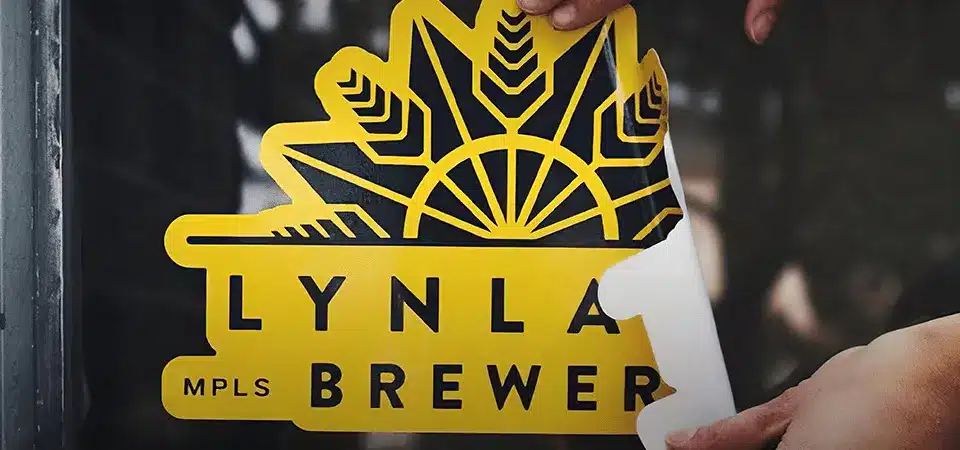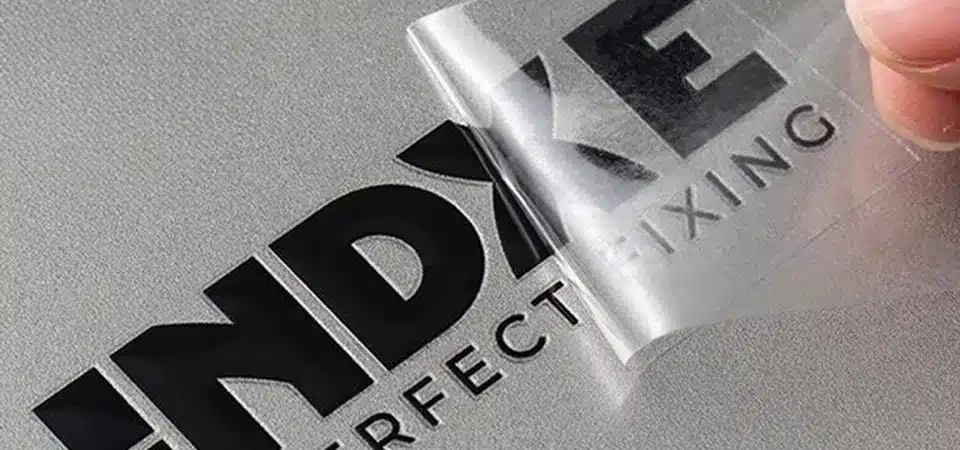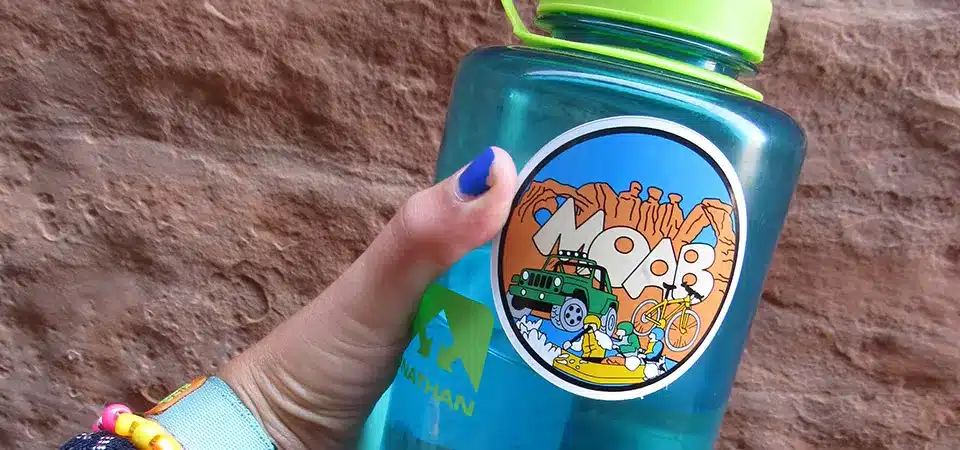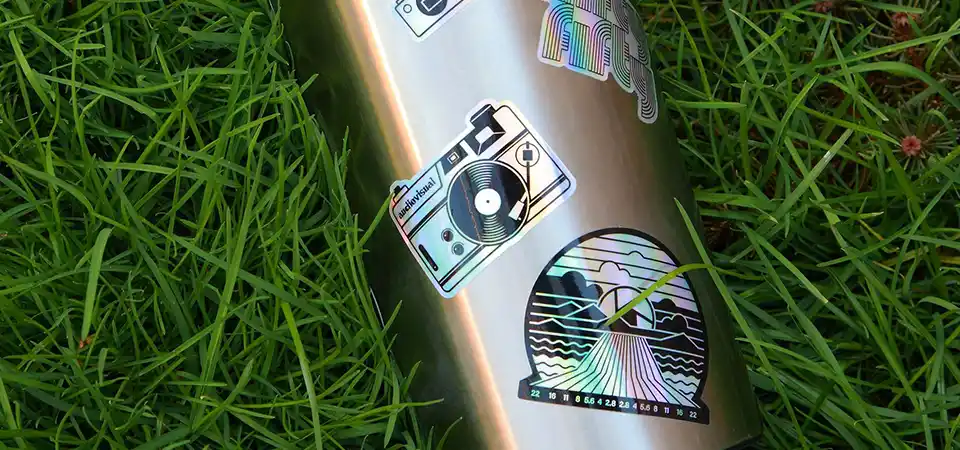You need a temporary sign but hate sticky residue. Adhesives can damage surfaces and are often not allowed. Static clings are the clean, reusable, glue-free solution you've been looking for.
A static cling is a thin vinyl graphic that sticks to smooth surfaces like glass using static electricity, not adhesive. It is completely removable, reusable, and leaves no residue, making it ideal for temporary window promotions and seasonal decor.
In my printing shop, I get a lot of questions about these "magic" stickers. People are amazed that something can stick so firmly without any glue. The secret isn't magic, it's just a little bit of science combined with the right material. Understanding how they work is the key to using them effectively. So, let's explore exactly what they are, what they're made of, and how you can get the best results for your business or home.
What exactly is a static cling?
You need a temporary graphic but worry about it falling off or looking flimsy. It seems impossible for something to stick without glue, so you're not sure if you can trust it.
A static cling is a non-adhesive vinyl film. It adheres to smooth, clean surfaces like glass or polished metal using the natural power of static electricity and moisture. This creates a temporary but firm bond without any glue.

The term "static" can be a little misleading. It's not quite like a balloon sticking to your hair after you rub it. The real magic is in the super smooth surface of the vinyl. When you press a cling against a perfectly smooth surface like glass, you push out all the air between them. This creates a natural vacuum effect. Any tiny bit of moisture in the air or on the surface gets trapped, and the surface tension of that moisture acts like a micro-suction cup, holding the cling in place.
I often explain it to my customers as a combination of suction and the natural attraction between two ultra-smooth surfaces. This physical bond is strong enough to hold the sign up for months, but weak enough that you can peel it off with zero effort and zero residue.
Key takeaway: The cling sticks because of a physical bond, not a chemical one like glue. That's why the surface must be non-porous and perfectly smooth. It will not work on drywall, wood, or textured surfaces.
What are static clings made out of?
You're considering clings, but you're worried about the material. Is it flimsy? Will the print quality be good? Will it tear easily when you try to reuse it?
Static clings are made from a flexible sheet of plasticized vinyl (PVC). This material is formulated to be highly pliable and have an extremely a smooth surface, which is essential for generating the static bond. It contains no adhesive coatings.

When we produce static clings in my shop, we use a specific type of material. It's a plasticized Polyvinyl Chloride (PVC) film. The "plasticized" part just means that additives have been included to make the vinyl soft and flexible, not rigid like a PVC pipe. This flexibility allows it to conform perfectly to the surface.
The vinyl we use is typically about 7 to 8 mil thick. This is actually thicker and more durable than the material used for a standard adhesive sticker, which is usually only 3-4 mil. This extra thickness makes the cling durable enough to be removed, handled, and reapplied multiple times without tearing. For the printing, we print directly onto the vinyl with modern UV-cured inks. These inks are instantly dried by UV light, making the design vibrant, scratch-resistant, and waterproof.
Finally, your cling will come on a special, glossy paper liner. This liner's job is to protect the ultra-smooth "business side" of the cling, keeping it free from dust and scratches until you're ready to apply it.
| Feature | Static Cling Vinyl | Standard Adhesive Vinyl |
|---|---|---|
| Material | Plasticized PVC | Calendared/Cast PVC |
| Adhesion | Static & Moisture | Chemical Adhesive |
| Thickness | Thicker (7-8 mil) | Thinner (2-4 mil) |
| Reusability | Yes | No |
| Best Surface | Glass, Smooth Metal | Almost Any Surface |
How can you make your static clings stick perfectly?
Nothing is more annoying than a cling that keeps falling off. You clean the window and put it up, but an hour later it's curled up on the floor, looking useless.
For a perfect stick, the surface must be immaculately clean. Use a lint-free cloth and water to wipe the glass. Applying the cling to a slightly damp surface can also dramatically improve the bond and helps remove air bubbles.

Over the years, I've learned that application makes all the difference. I tell my clients that the #1 reason a cling fails is a dirty window. Following these simple steps will guarantee your cling stays put.
The Foolproof Application Method
- Clean the Surface First: This is the most important step. Use a lint-free cloth and a simple solution of water (maybe with a tiny drop of soap or vinegar) to wipe down the glass. The biggest mistake people make is using a chemical window cleaner like Windex. These cleaners can leave behind an invisible residue that prevents the cling from sticking.
- Clean the Cling (If Reusing): If you're reusing an old cling, it probably has dust on it. Just rinse it under cool water and let it air dry or wipe it with a lint-free cloth.
- Use a Little Water: This is the professional trick. Lightly mist the glass with a spray bottle of water. This helps the cling slide so you can position it perfectly, and it ensures there's enough moisture to create a strong surface-tension bond.
- Apply and Squeegee: Place the cling on the damp window. Then, using a squeegee or even a credit card, smooth the cling from the center outwards. This forces out all the air bubbles and excess water, creating a perfect, strong seal.
Also, try to apply your cling when the glass is at room temperature. If the glass is too cold, the vinyl can be stiff and won't stick as well.
Where and how should you use static clings?
You have a great idea for a promotion, but you're not sure if a static cling is the right product. You need to know where it works best and where it will fail.
Use static clings for temporary promotions on indoor glass surfaces like doors, windows, and mirrors. They are perfect for seasonal sales or holiday decor. To reuse them, store them flat on their original backing paper to keep them clean.
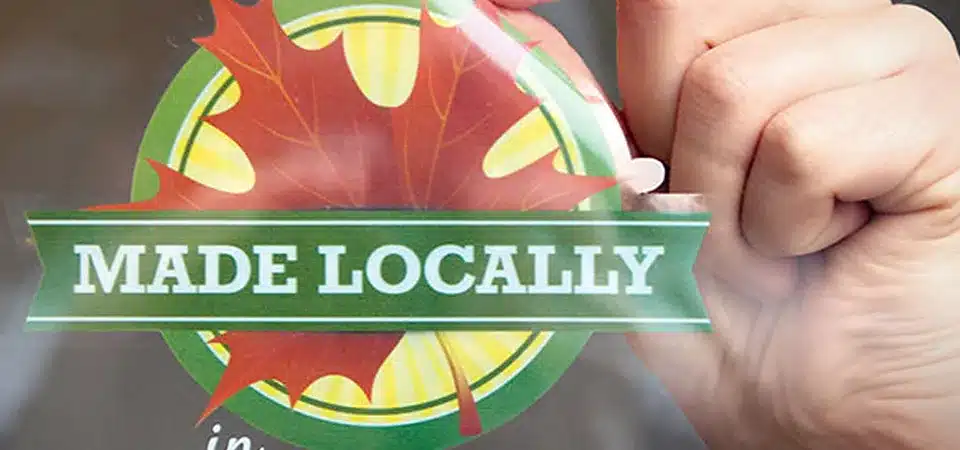
Static clings are incredibly versatile, but they have a clear set of ideal uses. Knowing when to use them—and when not to—is key to getting your money's worth.
Perfect Applications for Static Clings
- Retail Storefronts: By far the most popular use. Think "SALE," "20% OFF," or festive holiday decorations on your front door or window.
- Vehicle Service Reminders: The little "Next Oil Change Due" sticker inside your windshield is a perfect example of a static cling.
- Office Environments: Use them on glass conference room walls for event branding or temporary privacy screens.
- Home Decor: They are fantastic for seasonal decorations like snowflakes for winter or spooky ghosts for Halloween because they come off cleanly after the holiday.
When Not to Use a Static Cling
- On Walls or Wood: They need a non-porous surface. They will not stick to painted drywall, wood, or plastic with a slight texture.
- Outdoors in Bad Weather: While they are waterproof, a strong wind or heavy rain can get underneath the cling and lift it off the glass. They are best for indoor use or very mild, protected outdoor spots.
- On Frosted or Textured Glass: The surface needs to be perfectly smooth to create the seal.
To reuse your clings, carefully peel them off the glass and reapply them to the original glossy backing paper they came on. If you lost it, a piece of wax paper works well too. Store them flat in a cool, dry place. A well-cared-for cling can be used for many seasons.
Is the material in static clings dangerous?
You hear the words "vinyl" and "plastic" and immediately worry about chemicals. Is this material safe to have in your store, your home, or around your family?
No, static cling vinyl is completely safe for general commercial and household use. It is non-toxic and doesn't use a chemical adhesive, so there are no fumes. The only realistic risk is that small pieces could be a choking hazard.

This is a valid concern for any product you bring into your space. I can assure you that static clings are one of the safest signage options you can choose. The solid PVC vinyl material is stable and inert, meaning it doesn't release harmful chemicals into the air. One of their biggest safety benefits is that they don't have any adhesive. Some glues can contain Volatile Organic Compounds (VOCs) that can be released into the air; with clings, this is a non-issue.
The inks we use are also safe. In my shop, we use UV-cured inks. This modern technology uses UV light to instantly dry the ink, locking the color into the material. It's a solvent-free process, so there are no fumes to worry about.
The only practical safety consideration is for very young children. If you have a toddler who might peel a small cling off a window and put it in their mouth, it could pose a choking hazard. This is just a common-sense precaution for any small object. For this reason, I just recommend placing them out of a child's easy reach.
Conclusion
Static clings are a clean, reusable, and easy way to display graphics on smooth surfaces like glass. They are the perfect non-adhesive solution for temporary signs, sales, and decorations.

